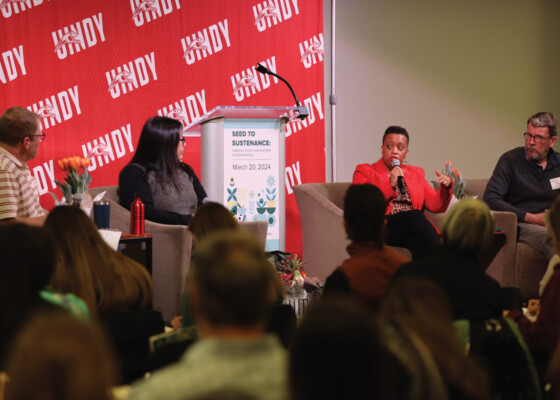Meet Your Guides: Part 7
October 18, 2016We’re introducing you to the creative, intelligent and environmentally savvy scholars leading us on our adventures. Our scholars will help infuse the humanities into each excursion by facilitating interesting conversations that connect environmental…
We’re introducing you to the creative, intelligent and environmentally savvy scholars leading us on our adventures. Our scholars will help infuse the humanities into each excursion by facilitating interesting conversations that connect environmental literature, nature and the past, present and future of Hoosier stewardship.
Meet…
Kevin McKelvey, associate professor of English and director of MA program in Social Practice Art at University of Indianapolis
What excursions will you lead?
Join me for the last Next Indiana Campfire of the year! We’ll be taking a late-autumn hike along the Tecumseh Trail in Morgan-Monroe State Forest on Saturday, Nov. 5. Grab your tickets!
What drew you to Next Indiana Campfires? How does it connect to your professional or personal interests?
I’ve been working to connect writing and literature and outdoor experiences for years in my teaching and in my own writing, so I’ve been so pleased to work with Indiana Humanities on this awesome project.
What author, book, essay or poem first awakened an interest in environmental writing? Tell us a little about when you read it and how it impacted you.
Probably an encyclopedia of animals I had as a kid, and Fifty Trees of Indiana I got through a 4-H project. Maybe the Laura Ingalls Wilder books or Mark Twain as well. I read a lot as a kid and lived on the edge of a farm field and hunted and fished, so I was around and in the environment and wrote a lot about it before I ever really read and studied environmental writing.
Where’s your favorite place to spend time outdoors in Indiana? Have you discovered a hidden gem that more Hoosiers should know about?
Anywhere with some trees and topography and water and, if no water, some history or active conservation. We are so lucky to have so many preserved places from local Land Trusts, The Nature Conservancy and state and federal agencies. We’re returning to some big, contiguous ecosystems like Big Walnut Creek, Sugar Creek, Kankakee Sands, and Brown County Hills.
What’s the focus of your scholarly research / creative practice? How does it relate to nature and the environment?
My background is in poetry, fiction, and nonfiction, so I have projects in those areas, especially on rivers and wilderness, and I also do book editing and design. In recent years, I’ve done more work in placemaking and social practice art, and much of that revolves around ecology, agriculture, text, drawing, sculpture, and collaboration.
Is there an environmental humanities topic or text that you love teaching? What is it, and why do you love using it in the classroom?
The great writers you can learn from: the ancient Chinese poets, Robinson Jeffers, Walt Whitman, Barbara Kingsolver, Janisse Ray, Wendell Berry, John Muir, Edward Abbey, Pattiann Rogers, Allison Deming, Paula Bohince, Ross Gay, Maurice Manning, Cecily Parks, Ed Roberson, Derek Sheffield, Todd Davis, or about anybody in The Ecopoetry Anthology.
Okay, just for fun. What’s on the top of your book pile these days?
I have about twelve different piles going for different projects.
—————————————————-
Next Indiana Campfires is a unique way to connect nature, literature and Indiana’s Bicentennial. The program is supported by the Efroymson Family Fund, the Nina Mason Pulliam Charitable Trust and Pulitzer Prizes Centennial Campfires. Indiana Humanities is supported in part by Lilly Endowment Inc. and the National Endowment of the Humanities.
This post is part of the weekly blog series devoted to the initiative. Check back every Tuesday to learn more about Indiana’s great environmental literature, find out interesting facts about Hoosier stewardship, get all the latest program details and more.


